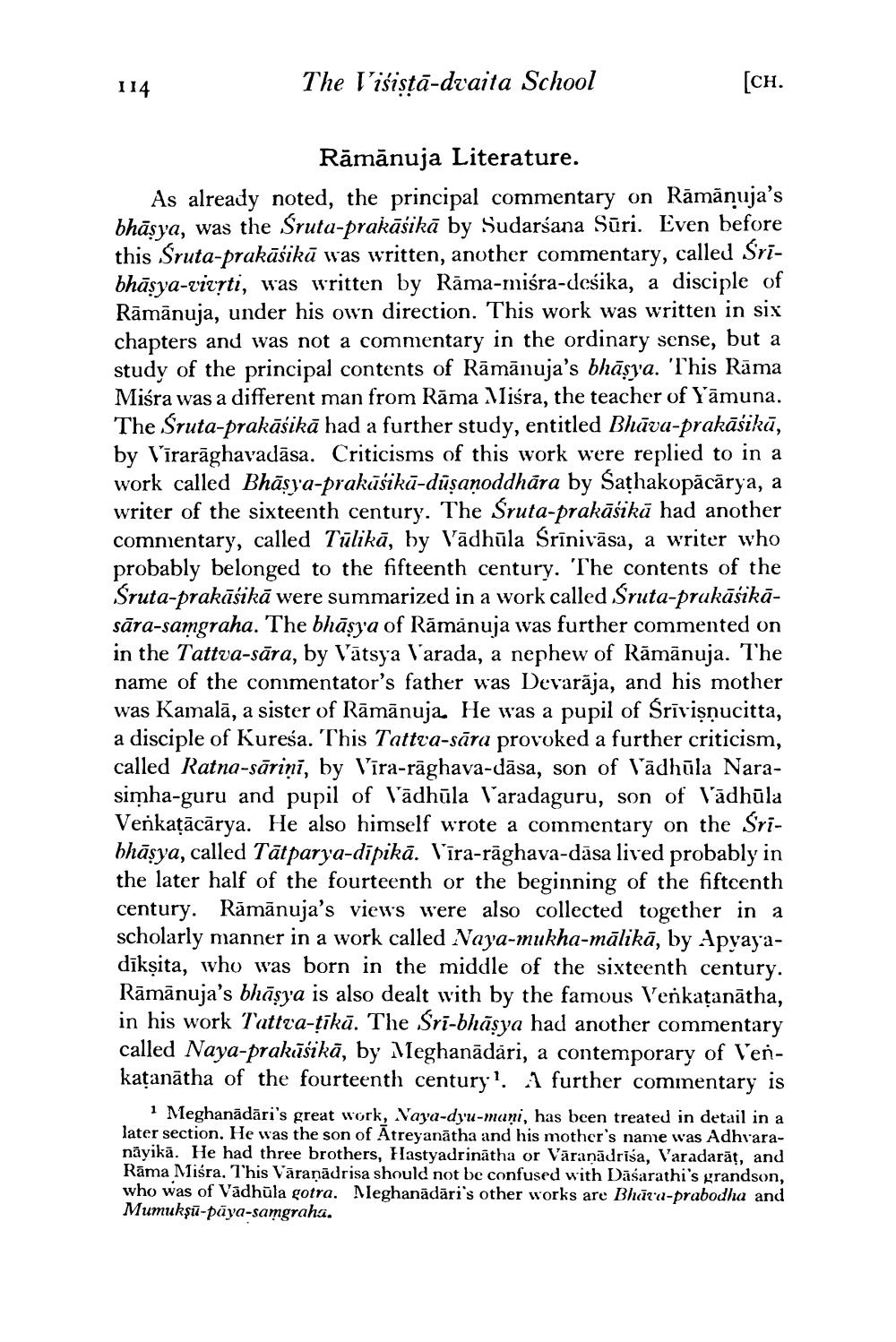________________
114
The l'isistā-dvaita School
[ch.
Rāmānuja Literature. As already noted, the principal commentary on Rāmānuja's bhāsya, was the Sruta-prakāśikā by Sudarśana Sūri. Even before this Śruta-prakāśikā was written, another commentary, called Sribhāsya-vizīti, was written by Rāma-miśra-desika, a disciple of Rāmānuja, under his own direction. This work was written in six chapters and was not a commentary in the ordinary sense, but a study of the principal contents of Rāmānuja's bhāsya. This Rāma Miśra was a different man from Rāma liśra, the teacher of Yāmuna. The Sruta-prakāśikā had a further study, entitled Bhāva-prakāśikā, by Vīrarāghavadāsa. Criticisms of this work were replied to in a work called Bhāsya-prakūīšikā-düşaņoddhāra by Sathakopācārya, a writer of the sixteenth century. The Sruta-prakāśikā had another commentary, called Tülikā, by Vādhūla Srinivāsa, a writer who probably belonged to the fifteenth century. The contents of the Śruta-prakāśikā were summarized in a work called Sruta-prukāšikāsāra-samgraha. The bhāşya of Rāmánuja was further commented on in the Tattva-sāra, by Vātsya l'arada, a nephew of Rāmānuja. The name of the commentator's father was Devarāja, and his mother was Kamalā, a sister of Rāmānuja. He was a pupil of Śrīvisņucitta, a disciple of Kuresa. This Tattra-sāra provoked a further criticism, called Ratna-sāriņi, by Vīra-rāghava-dāsa, son of lādhūla Narasimha-guru and pupil of lādhūla Varadaguru, son of lādhūla Venkațācārya. He also himself wrote a commentary on the Sribhāşya, called Tātparya-dipikā. Vīra-rāghava-dāsa lived probably in the later half of the fourteenth or the beginning of the fifteenth century. Rāmānuja's views were also collected together in a scholarly manner in a work called Naya-mukha-mālikā, by Apyayadīksita, who was born in the middle of the sixteenth century. Rāmānuja's bhāşya is also dealt with by the famous Verkațanātha, in his work Tattva-ţikā. The Sri-bhāşya had another commentary called Naya-prakıīšikā, by Meghanādāri, a contemporary of V'enkatanātha of the fourteenth century? A further commentary is
1 Meghanādāri's great work, Vaya-dy'u-muni, has been treated in detail in a later section. He was the son of Atreyanātha and his mother's name was Adhvaranāyikā. He had three brothers, Hastyadrinātha or Vāranādrisa, Varadarāt, and Rāma Miśra. This Vāranādrisa should not be confused with Dasarathi's grandson, who was of Vādhūla gotra. Mleghanādāri's other works are Bhūru-prabodha and Mumuksū-pāya-samgraha.




